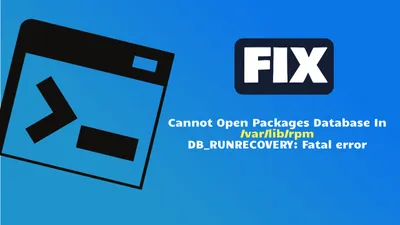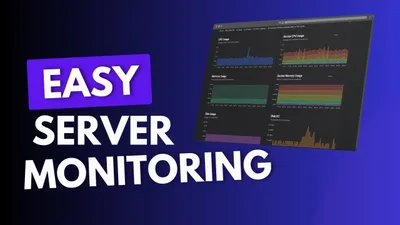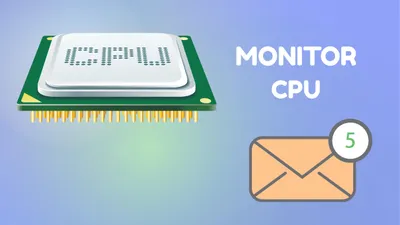Mastering Disk Imaging and Cloning with Linux's dd Command - Complete Guide
Learn how to use the powerful dd command in Linux for disk imaging, cloning, and data backup. Essential guide for system administrators and home server users.
The dd command is one of the most powerful and potentially dangerous tools in the Linux arsenal. Known as “disk duplicator” or sometimes jokingly as “data destroyer” due to its ability to completely overwrite data, dd is an essential utility for disk imaging, cloning, and low-level data operations.
In my home server setup with the N100 Intel mini PC, I regularly use dd for creating complete system backups, cloning drives before upgrades, and preparing bootable media. Whether you’re managing a home server or maintaining enterprise systems, mastering dd is crucial for effective data management and disaster recovery.
This comprehensive guide will walk you through everything you need to know about using dd safely and effectively.
Understanding the dd Command
What is dd?
The dd command (disk duplicator) is a low-level utility that copies and converts files at the byte level. It can copy entire disks, partitions, or create files with specific patterns, making it invaluable for system administration tasks.
Why Use dd?
- Bit-perfect copies: Creates exact replicas of disks or partitions
- Sector-level operations: Works at the lowest level, copying everything including boot sectors
- Versatile functionality: Can create images, clone disks, wipe data, and generate test files
- Bootable media creation: Perfect for creating bootable USB drives and installation media
- Forensic applications: Preserves exact disk state for analysis
- Cross-platform compatibility: Images created on one system work on another
Basic Syntax and Parameters
The fundamental syntax of dd is straightforward:
dd if=input_file of=output_file [options]Essential Parameters
| Parameter | Description | Example |
|---|---|---|
if= | Input file (source) | if=/dev/sda |
of= | Output file (destination) | of=/home/backup.img |
bs= | Block size | bs=4M (4 megabytes) |
count= | Number of blocks to copy | count=1000 |
skip= | Skip blocks at start of input | skip=100 |
seek= | Skip blocks at start of output | seek=50 |
conv= | Conversion options | conv=sync,noerror |
status= | Progress display | status=progress |
Safety First: Critical Warnings
Danger: Data Destruction Risk
The dd command can permanently destroy data if used incorrectly. Always double-check your if= (input) and of= (output) parameters. There is no “undo” operation.
Safety checklist before using dd:
- Verify device names with
lsblkorfdisk -l - Unmount target devices before operations
- Have recent backups of important data
- Test commands on non-critical systems first
- Use
--dry-runwhen available (though not supported by dd itself)
Disk Imaging Operations
Creating Complete Disk Images
Disk imaging creates a file containing an exact copy of a disk or partition:
# Create image of entire disk
sudo dd if=/dev/sda of=/backup/disk-image.img bs=4M status=progress
# Create image of specific partition
sudo dd if=/dev/sda1 of=/backup/partition-image.img bs=4M status=progress
# Compress image during creation (saves space)
sudo dd if=/dev/sda bs=4M status=progress | gzip > /backup/disk-image.img.gzAdvanced Imaging with Error Handling
For disks with potential bad sectors:
# Copy with error resilience
sudo dd if=/dev/sda of=/backup/disk-image.img bs=4M conv=sync,noerror status=progress
# Skip bad sectors and continue
sudo ddrescue /dev/sda /backup/disk-image.img /backup/rescue.logRestoring from Images
# Restore complete disk from image
sudo dd if=/backup/disk-image.img of=/dev/sda bs=4M status=progress
# Restore from compressed image
gunzip -c /backup/disk-image.img.gz | sudo dd of=/dev/sda bs=4M status=progress
# Restore specific partition
sudo dd if=/backup/partition-image.img of=/dev/sda1 bs=4M status=progressDisk Cloning Operations
Direct Disk-to-Disk Cloning
Clone entire disks directly without creating intermediate files:
# Clone entire disk
sudo dd if=/dev/sda of=/dev/sdb bs=4M status=progress
# Clone with better performance (larger block size)
sudo dd if=/dev/sda of=/dev/sdb bs=16M status=progress
# Clone with verification
sudo dd if=/dev/sda of=/dev/sdb bs=4M status=progress && syncPartition-Level Cloning
# Clone specific partitions
sudo dd if=/dev/sda1 of=/dev/sdb1 bs=4M status=progress
# Clone partition table only
sudo dd if=/dev/sda of=/dev/sdb bs=512 count=1Performance Optimization for Cloning
Optimal block sizes for different scenarios:
| Use Case | Recommended Block Size | Reasoning |
|---|---|---|
| SSD to SSD | bs=16M | Takes advantage of high sequential speeds |
| HDD to HDD | bs=4M | Balances speed with system responsiveness |
| Network storage | bs=1M | Reduces network overhead |
| USB drives | bs=4M | Good balance for varying USB speeds |
| System partition | bs=4M | Safe choice for critical data |
Specialized dd Operations
Master Boot Record (MBR) Management
# Backup MBR (first 512 bytes containing partition table)
sudo dd if=/dev/sda of=/backup/mbr-backup.img bs=512 count=1
# Restore MBR
sudo dd if=/backup/mbr-backup.img of=/dev/sda bs=512 count=1
# Backup extended boot record (first 1024 bytes)
sudo dd if=/dev/sda of=/backup/boot-backup.img bs=1024 count=1Creating Bootable Media
# Create bootable USB from ISO
sudo dd if=/path/to/linux.iso of=/dev/sdX bs=4M status=progress && sync
# Create Windows installation USB (requires additional tools)
sudo dd if=/path/to/windows.iso of=/dev/sdX bs=4M status=progress
# Verify bootable media creation
sudo dd if=/dev/sdX bs=4M count=1 | md5sum
sudo dd if=/path/to/linux.iso bs=4M count=1 | md5sumData Wiping and Security
Data Destruction Warning
These operations permanently destroy data. Ensure you have backups and are targeting the correct device.
# Simple zero-fill wipe
sudo dd if=/dev/zero of=/dev/sda bs=4M status=progress
# Random data wipe (more secure)
sudo dd if=/dev/urandom of=/dev/sda bs=4M status=progress
# DoD 5220.22-M compliant wipe (3-pass)
sudo dd if=/dev/zero of=/dev/sda bs=4M status=progress # Pass 1: zeros
sudo dd if=/dev/urandom of=/dev/sda bs=4M status=progress # Pass 2: random
sudo dd if=/dev/zero of=/dev/sda bs=4M status=progress # Pass 3: zeros
# Wipe specific number of blocks
sudo dd if=/dev/zero of=/dev/sda bs=4M count=1000 status=progressCreating Test Files and Benchmarking
# Create file with random data for testing
dd if=/dev/urandom of=/tmp/test-1gb.dat bs=1M count=1024
# Create file with zeros (faster, compressible)
dd if=/dev/zero of=/tmp/test-1gb-zeros.dat bs=1M count=1024
# Create sparse file (doesn't use actual disk space)
dd if=/dev/zero of=/tmp/sparse.dat bs=1M count=1024 seek=1024
# Benchmark disk write speed
dd if=/dev/zero of=/tmp/benchmark bs=1M count=1024 oflag=directAdvanced dd Techniques
Using dd with Pipes and Compression
# Create compressed image on-the-fly
sudo dd if=/dev/sda bs=4M status=progress | gzip -c > /backup/compressed-image.img.gz
# Decompress and restore simultaneously
gunzip -c /backup/compressed-image.img.gz | sudo dd of=/dev/sda bs=4M status=progress
# Create image with progress and compression
sudo dd if=/dev/sda bs=4M status=progress | pv | gzip > /backup/image.img.gz
# Network transfer with compression
sudo dd if=/dev/sda bs=4M status=progress | gzip | ssh user@remote 'cat > /backup/remote-image.img.gz'Error Recovery and Resilient Copying
# Continue copying despite read errors
sudo dd if=/dev/sda of=/backup/image.img bs=4M conv=sync,noerror status=progress
# Skip to different position and continue
sudo dd if=/dev/sda of=/backup/image.img bs=4M skip=1000 seek=1000 status=progress
# Use ddrescue for better error handling
sudo ddrescue -d -r3 /dev/sda /backup/image.img /backup/rescue.logIntegration with Home Server Workflows
In my home server setup, I use dd as part of automated backup routines:
#!/bin/bash
# automated-disk-backup.sh
# Integration with home server backup strategy
DATE=$(date +%Y%m%d_%H%M%S)
BACKUP_DIR="/srv/backups/disk-images"
LOG_FILE="/var/log/disk-backup.log"
# Create backup directory
mkdir -p "$BACKUP_DIR"
# Backup system drive
echo "$(date): Starting system drive backup" >> "$LOG_FILE"
sudo dd if=/dev/sda of="$BACKUP_DIR/system-backup-$DATE.img" bs=4M status=progress 2>> "$LOG_FILE"
# Verify backup integrity
if [ $? -eq 0 ]; then
echo "$(date): Backup completed successfully" >> "$LOG_FILE"
# Compress older backups
find "$BACKUP_DIR" -name "*.img" -mtime +1 -exec gzip {} \;
# Clean up old backups (keep 7 days)
find "$BACKUP_DIR" -name "*.img.gz" -mtime +7 -delete
else
echo "$(date): Backup failed!" >> "$LOG_FILE"
exit 1
fiThis integrates well with LVM setups and complements other backup strategies.
Monitoring and Progress Display
Built-in Progress Monitoring
# Basic progress display
sudo dd if=/dev/sda of=/backup/image.img bs=4M status=progress
# Send progress signals manually
sudo dd if=/dev/sda of=/backup/image.img bs=4M &
# In another terminal, send USR1 signal for progress
sudo kill -USR1 $(pidof dd)Enhanced Monitoring with External Tools
# Using pv (pipe viewer) for better progress display
sudo dd if=/dev/sda bs=4M | pv -s $(sudo blockdev --getsize64 /dev/sda) | dd of=/backup/image.img bs=4M
# Monitor with iostat during operation
iostat -x 1 /dev/sda
# Watch dd process in real-time
watch -n 1 'sudo kill -USR1 $(pidof dd) 2>/dev/null'Troubleshooting Common Issues
Input/Output Errors
Common Error: Input/output error
This typically indicates bad sectors on the source drive or hardware issues.
Solutions:
- Use conv=noerror,sync: Continues copying despite errors
- Check drive health: Run
smartctl -a /dev/sdato check SMART status - Try ddrescue: Better error recovery than standard dd
- Reduce block size: Smaller blocks may skip over bad sectors
# Check drive health
sudo smartctl -a /dev/sda
# Use error-tolerant copying
sudo dd if=/dev/sda of=/backup/image.img bs=4M conv=noerror,sync status=progress
# Alternative with ddrescue
sudo ddrescue --force --no-scrape /dev/sda /backup/image.img /backup/rescue.logPermission and Access Issues
# Ensure proper permissions
sudo chmod +r /dev/sda # Read access
sudo chmod +w /dev/sdb # Write access
# Check if device is mounted
lsblk | grep sda
mount | grep sda
# Unmount if necessary
sudo umount /dev/sda1Performance Problems
# Optimize for your hardware
# For SSDs
sudo dd if=/dev/sda of=/dev/sdb bs=16M oflag=direct status=progress
# For HDDs
sudo dd if=/dev/sda of=/dev/sdb bs=4M status=progress
# Check system load during operation
iostat -x 1Verification and Integrity Checking
# Verify copied data integrity
sudo md5sum /dev/sda > source.md5
sudo md5sum /backup/image.img > backup.md5
diff source.md5 backup.md5
# Compare disks directly
sudo cmp /dev/sda /dev/sdb
# Verify specific partitions
sudo dd if=/dev/sda1 bs=4M | md5sum
sudo dd if=/backup/partition.img bs=4M | md5sumBest Practices and Safety Guidelines
Pre-Operation Checklist
- Identify devices correctly using
lsblk,fdisk -l, orblkid - Unmount all partitions on target devices
- Check available disk space for image files
- Test on non-critical data first
- Have backups of important data
- Document the procedure for repeatability
Performance Best Practices
| Scenario | Recommended Settings | Notes |
|---|---|---|
| Large disk cloning | bs=16M, oflag=direct | Bypasses system cache |
| Network operations | bs=1M, use compression | Reduces bandwidth usage |
| System backups | bs=4M, status=progress | Good balance of speed/safety |
| Forensic imaging | bs=512, conv=noerror,sync | Preserves exact structure |
| Bootable media | bs=4M, verify with sync | Ensures complete write |
Security Considerations
# Secure deletion patterns
# Single pass (fast)
sudo dd if=/dev/zero of=/dev/sda bs=4M status=progress
# Three-pass DoD standard
for pass in zero random zero; do
case $pass in
zero) source="/dev/zero" ;;
random) source="/dev/urandom" ;;
esac
sudo dd if=$source of=/dev/sda bs=4M status=progress
done
# Verify secure deletion
sudo hexdump -C /dev/sda | head -20Real-World Use Cases
Home Server Maintenance
For home server administrators managing systems like my N100 setup:
# Pre-upgrade system backup
sudo dd if=/dev/sda of=/backup/pre-upgrade-$(date +%Y%m%d).img bs=4M status=progress
# Create bootable recovery media
sudo dd if=/path/to/rescue.iso of=/dev/sdX bs=4M status=progress
# Clone drive before hardware migration
sudo dd if=/dev/sda of=/dev/sdb bs=4M status=progressDevelopment and Testing
# Create identical test environments
sudo dd if=/dev/source-system of=/dev/test-system bs=4M status=progress
# Generate test data files
dd if=/dev/urandom of=/tmp/test-data.bin bs=1M count=100
# Create disk image for virtual machines
sudo dd if=/dev/sda of=/vm-images/template.img bs=4M status=progressDisaster Recovery
# Emergency system recovery
sudo dd if=/backup/system-backup.img of=/dev/sda bs=4M status=progress
# Restore from network backup
ssh backup-server 'cat /backup/system.img' | sudo dd of=/dev/sda bs=4M status=progress
# Quick MBR repair
sudo dd if=/backup/mbr-backup.img of=/dev/sda bs=512 count=1Alternative Tools and When to Use Them
While dd is powerful, sometimes other tools are more appropriate:
| Tool | Best For | Advantages |
|---|---|---|
| rsync | File-level synchronization | Incremental, network-aware |
| cp | Simple file copying | Preserves permissions, faster for files |
| tar | Archive creation | Compression, selective restore |
| ddrescue | Damaged drives | Superior error recovery |
| clonezilla | GUI disk cloning | User-friendly, compression |
| partclone | Partition-aware cloning | Only copies used sectors |
Conclusion
The dd command is an indispensable tool for Linux system administrators and home server enthusiasts. Its ability to create bit-perfect copies, handle low-level disk operations, and integrate into automated workflows makes it essential for data backup, system migration, and disaster recovery.
While its power comes with responsibility—the potential for data destruction is real—following proper safety procedures and understanding its capabilities will make you a more effective system administrator. Whether you’re managing a home server setup or enterprise infrastructure, mastering dd is a valuable skill that will serve you well.
Remember: with great power comes great responsibility. Always double-check your commands, test on non-critical data first, and maintain current backups of important information.
Master Your dd Skills

